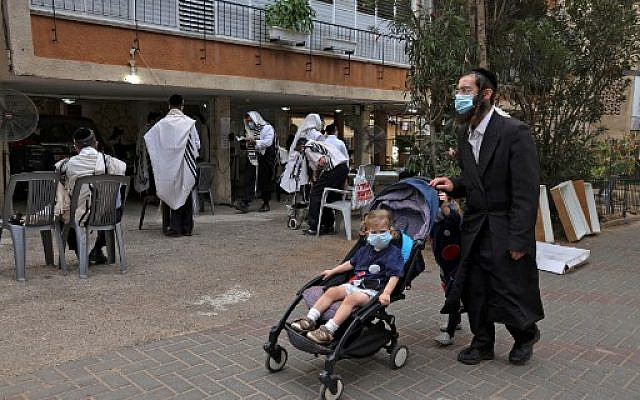
Once we had tracked a population that doesn’t use the internet and dramatically reduced its large number of seriously infected cases, I knew we could manage it anywhere
Imagine a city with a population density three times that of Manhattan’s, whose residents disdain modern technology, particularly the internet, and still use flip phones to communicate. That city exists in Bnei Brak, the largest ultra-Orthodox Jewish town in Israel, and it was hit hard by the novel coronavirus. How could the government go about flattening the curve in such a city considering smartphones, central to successfully implementing contact tracing, were a non-factor? My company was tasked with helping the municipality do precisely that. We needed a way to perform mass surveillance without giving the local population the feeling of being under the watchful eye of big brother. Here is our story, Bnei Brak’s story, and what we learned from the experience.

To manage the pandemic is to know how to manage data. In any kind of crisis, situational awareness is essential. COVID-19 spreads fast, and too often, municipalities find themselves playing catch-up, as an array of moving parts must be managed, supervised, tested, and regulated. Rendering a detailed image of the current reality becomes complicated, but essential.
At the time we deployed in Bnei Brak, it was estimated that the virus had infected a tenth of the population of 200,000, and was spreading exponentially, doubling every three-to-four days. Any delay in the implementation of a successful strategy would mean thousands more infected and a crisis deteriorating by the minute. It is counterintuitive how big a difference a few days can make in a situation like this. The margin of error is tiny, and the repercussion of any delay is literally life and death.
Getting people to adhere to quarantine measures is challenging everywhere. Bnei Brak, however, posed challenges that do not exist in most communities in the developed world, as households in the city are often packed with around a dozen children. Buildings are crowded with many families, and intergenerational mingling is frequent. The solution was to extract infected individuals from these dense areas and place them in separate facilities while they were sick.
One of the most crucial elements of any strategy in a time of crisis is working channels of communication, and though it might seem obvious to secular people in the developed world that everyone watches the news, it is not. The Israeli government failed to even reach the ultra-Orthodox in Bnei Brak when it advertised social distancing practices, let alone convince them to adhere to the directives.
That is mostly because, unlike the rest of the developed world, the ultra-Orthodox community does not take orders from its national government or consume the same media as the secular world. Even the internet available usually filters out channels such as Facebook and CNN. Bnei Brak’s population needed to hear about COVID-19 from its local religious leaders, the rabbis, before anything was to be done to address it. For our efforts to be successful, we needed the consent and support of those leaders. The solution we implemented involved taking control of 500 surveillance cameras. This is a high level of surveillance, and it was crucial that Bnei Brak’s residents understood we were there to help, not to impose a 1984-style dystopia.
To that end, we appointed a “manager” in each building, who was supplied with live updates and invited to share the data with neighbors. The manager would also provide reports on events in the buildings and neighborhoods.
Successful communication is a two-way street. Just as officials must communicate the situation to the people, citizens themselves must have the ability to report their needs, such as food or medicine, to city officials. And, importantly, citizens must report people breaking lockdown restrictions.
Israeli media were inundated with stories of COVID-19-positive individuals breaking the quarantine, who was then intercepted by authorities. This was possible thanks to the local population’s cooperation and usage of the newly established communications channels. With adequate technological surveillance measures, rule-breakers can be intercepted before spreading events occur. Our system, for example, can automatically differentiate between people who wear a face mask and those who do not. However, that doesn’t measure up to the importance of people reporting events before they happen — which enables a preemptive response — hereby, interceding before spreading occurs.
COVID-19 is already a tremendous tragedy, and the battle against it rages on in new places and second waves across the globe. The good news is that we have learned how to fight it. On the medical side of things, the treatments are now more effective, the required staff is now adequately equipped with protection, and countries have testing regimen up and running. We have learned lessons on how to use available technologies in new and effective ways. As we try new methods, we keep the good and toss out the bad, as we continue to wage war against the invisible enemy.


